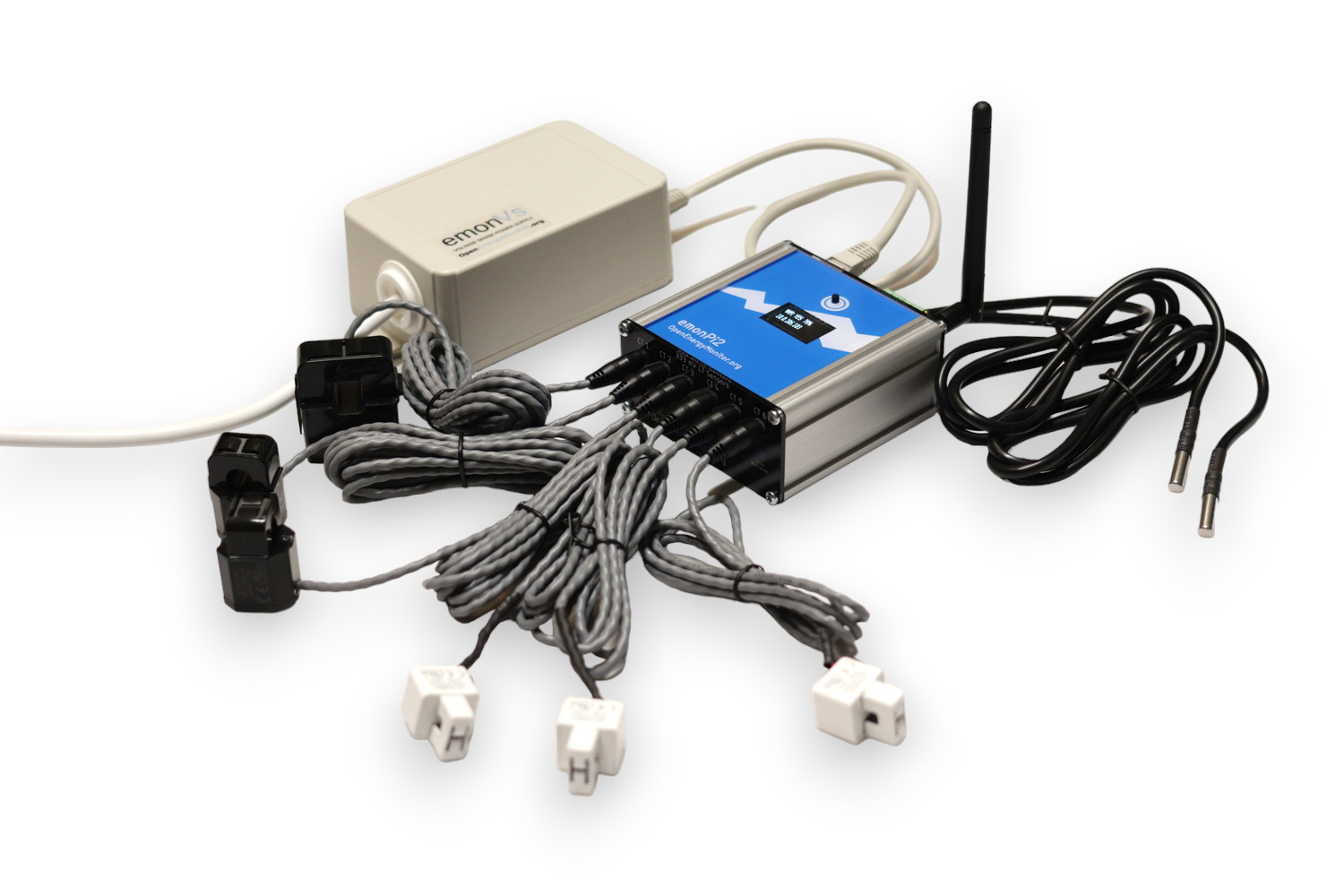Overview
The emonPi2 builds directly on recent emonTx4 development, sharing a mostly identical PCB design. It provides the same 6x clip-on CT current sensor input functionality but with the RaspberryPi integrated in a single enclosure.
Like the emonTx4, the emonPi2 uses the same focus on higher accuracy, more CT channels, precision voltage sensing and the new microcontroller core. When combined with the emonVS voltage sensor and a selection of CT sensors, it provides an end-to-end electricity monitoring solution perfect for monitoring home consumption, solar generation, EV charging, heat pumps, battery storage among other applications.

Key features
6x clip-on CT current sensor inputs (suitable for a range of 333mV voltage output CT sensors).
emonVs precision voltage sensor input.
Full Real/Active power measurement & continuous sampling.
Cumulative energy persisted on reboot.
Both single and 3 phase support.
3 pluggable terminal block inputs for DS18B20 temperature sensing, pulse counting or an analogue voltage input.
On-board USB to UART converter for easier programming and serial output.
433 MHz radio transceiver
Standard RaspberryPi GPIO header connection for direct connection to a RaspberryPi
Wall-mount aluminium enclosure
Technical spec
Microcontroller: Microchip AVR128DB48
Arduino core support DxCore by SpenceKonde
ADC Resolution: 12-bit
Precision voltage reference: MCP1502
On board USB to UART converter: CP2102
RFM69cw 433 MHz radio
Accuracy
The emonPi2 includes the same accuracy improvements included in the emonTx4. The largest source of improvement comes from: a higher accuracy voltage sensor, higher accuracy CT current sensors and a wider range of CT sensors with current ratings that can better suit the load being monitored (making sure the analog-to-digital range of the microcontroller is being put to full use).
The key sensor and component tolerances are now:
CT Sensors: ±0.5%
EmonVs voltage sensor: ±0.5%
Analog voltage reference ±0.2%
Combined: ±1.2%
We have also upgraded the microcontroller from the ATmega328 to and AVR128DB48. The main improvement is a higher resolution ADC at 12-bits (4x the resolution of the ATmega328) alongside the capability to monitor more channels.